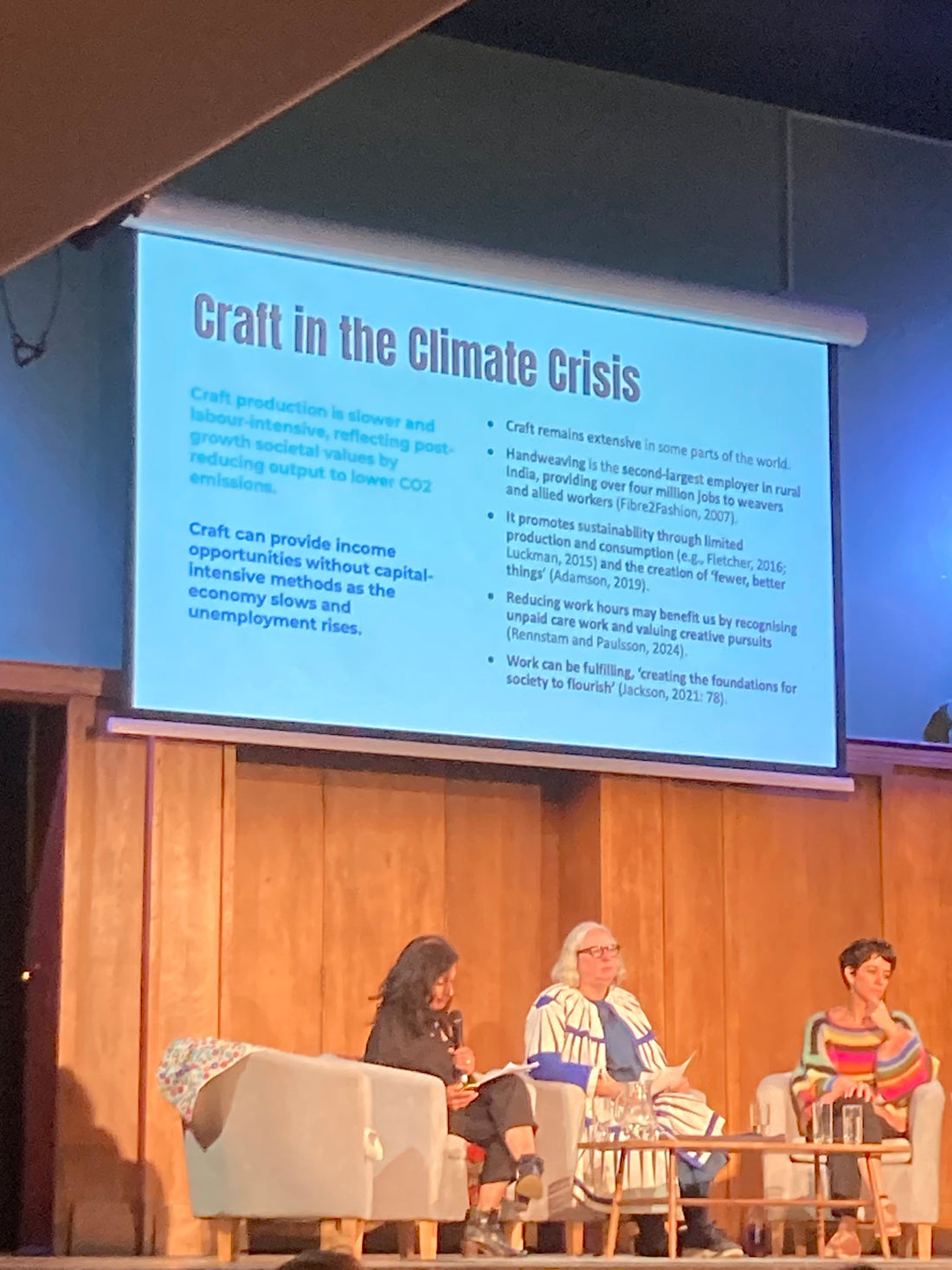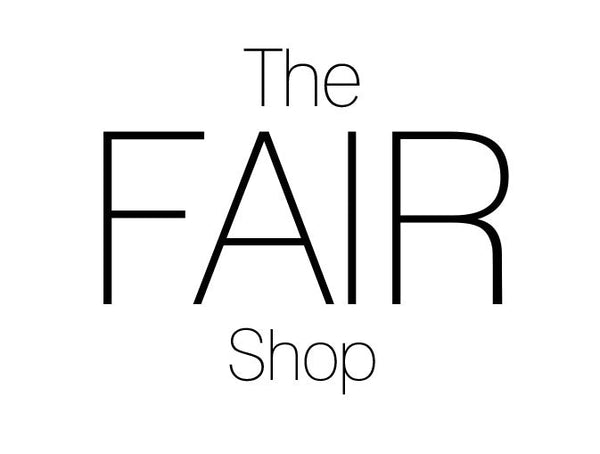
Crafting Fashion Futures: Reflections from Conway Hall
Siobhan WilsonShare
On September 18th, I attended the Crafting Fashion Futures event, hosted by Fashion Declares and Safia Minney at Conway Hall in London. The room was filled with familiar faces from across the sustainable fashion community — people FAIR has worked with over the years, including those from the former Ethical Fashion Forum/Common Objective, Pachacuti, Fashion Revolution, alongside many small ethical businesses, journalists and academics.
Even though I work in this field every day, I always leave events like this with fresh insights. Sustainable fashion is endlessly layered, and there is always more to learn from the innovative solutions people are creating.
Rethinking Craft
The event began with a focus on craft — but not always in the way we think of it. Craft isn’t just embroidery, batik, appliqué or block printing. It’s also the skill of growing cotton from seed, the expertise of weaving and dyeing, and the artistry of design. Craft is about touch, time, and connection: the bond with communities, the care for soil and ecosystems, and the joy of creating something lasting.
This is what sustainable fashion should represent. It isn’t about churning out fossil-fuel-based fabrics, marketed with glossy perfection to drive endless consumption. It’s about slowing down, respecting materials, and celebrating the human hands behind every garment.
A Changing Wardrobe
Polly Leonard of Selvedge Magazine shared a striking comparison. In 1966, when she was born (the same year as me), people typically spent around 10% of their income on clothes and owned an average of 25 items. Today, that figure has risen to about 75 items — yet we no longer cherish them. Instead, wardrobes overflow while mountains of clothing end up in landfills or exported to communities unequipped to handle the waste. In places like Ghana, local textile traditions have been pushed aside by this flood of discarded clothing.
The message was clear: slow down. Buy less. And when we do buy, choose pieces that will last — not cheaper, throwaway items, but fewer, better ones.
Ghana’s Story: Waste and Renewal

One of the most powerful talks came from Daniel Mawuli Quist of the Or Foundation in Ghana. He spoke about the Kantamanto Market in Accra, where the impacts of fast fashion are visible every day. Yet even here, resilience shines through: artisans rescue fabric and scraps, transforming shirts into shorts and waste into new designs. Their work diverts as much as possible from Ghana’s waterways and landfills.
Daniel also explained the origins of the local word for secondhand clothing obroni wawu, which translates to “dead white person’s clothes.” The phrase reflects the disbelief that good-quality garments could simply be discarded. It’s a sharp reminder that if we build our wardrobes with care, choosing garments to treasure for years, we can change this cycle. As Fashion Revolution’s Carry Somers reminded us, “Loved clothes last.”
So Many Ways Forward
There isn’t one single solution to sustainable fashion — and that’s the beauty of it. For some, it’s sharing clothes within families and communities. For others, it’s buying secondhand or upcycling. When buying new, we can seek out designers who embrace craft and slow fashion, circularity, creating garments designed for durability, longevity, and eventual reuse.
At FAIR, we find it easier to define what not to support: fast fashion. Exploitative supply chains, fossil-fuel-based fabrics, pesticide-heavy cotton, and clothing designed to fall apart — these have no place in a just and sustainable future.
Instead, we stand for ethical choices: garments whose provenance is clear, whose makers are respected, and whose materials honour both people and planet.
Boundless Conversations, Shared Solutions
The day was full of inspiring conversations — from exploring biodegradable leather alternatives that protect communities in the Amazon, to rediscovering British fibres like hemp and wool, to the UK craft movement weaving sustainability into small businesses. What connected all of these was community: people coming together to sew, mend, swap, and create.
But the challenges are real too. As raised in discussion, fashion is increasingly driven by tech companies, not craftspeople, raising questions about values, culture, and even mental health. Overconsumption and disposable trends erode wellbeing as much as they harm the planet.
Slowing Down, Cherishing More
The way forward is clear: spread the word about slow fashion. Buy less, buy better, and reconnect with the beauty of craft. Cherish the weaving, the dyeing, the growing, the sewing — the sheer human artistry that turns materials into garments we love.
Let’s say no to greenwashing (and its new cousin, “craftwashing”) and instead seek out clothing that supports healthier people, stronger communities, and a thriving planet.
Because when we slow down and choose with care, fashion becomes not just what we wear, but how we live.
